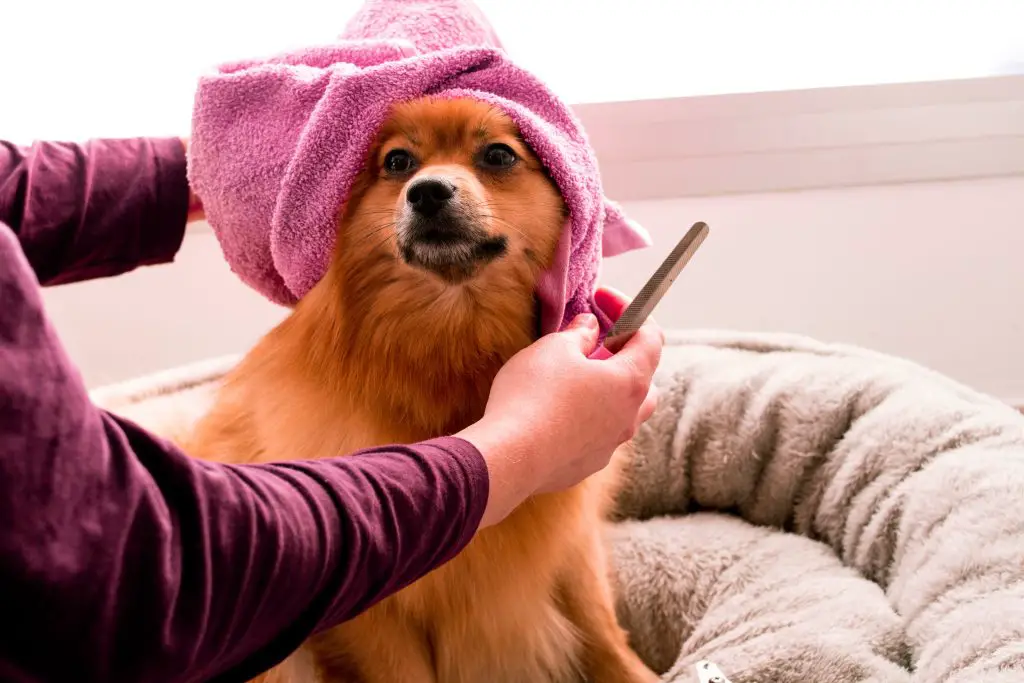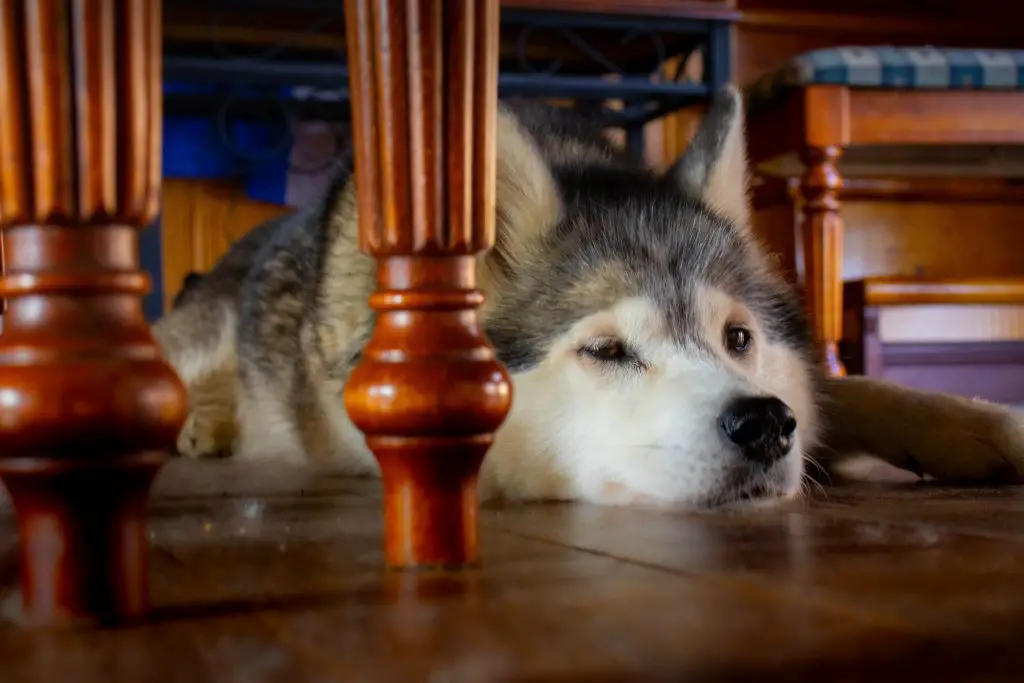Table of Contents
- Are Broken Dog Nails an emergency?
- What Causes a Dog’s Nails to Break?
- How Do You Treat Broken Nails?
- How long does it take for a dog’s broken nail to heal?
- Walking Forward
- FAQs
Are Broken Dog Nails an emergency?
When a dog breaks a nail it often creates a horrific scene as they will often start limping, bleeding and whining in pain. The sight of this is very distressing for pet owners.
However, before rushing to the vet it’s important to assess the injury to see if this is really necessary. Whilst some nail breaks may need professional first aid this is not always the case with many forms of home treatment being effective.
Just because home treatment can be an option, however, doesn’t mean that it’s always the best choice. For your pet this is a very painful injury. As such pain medication from a veterinary hospital might be required. Additionally, if the wound seems at all infected, no matter how small it is, you should always go to a vet immediately. They will prescribe antibiotics that will prevent infection from spreading further.
What Causes a Dog’s Nails to Break?
It may not be immediately obvious what has caused this injury to your dog. Broken nail causes can be very varied. However, it is crucial to ensure it never happens again. Once you’ve resolved the crisis, that it.
One of the most common ways for a dog’s nails to break is from snagging them against various objects. These can include carpets or upholstery or from landing on them from jumping. If your dog has longer nails, damage occurring in your house from these causes is more likely. As such regular nail trims are an effective way of preventing similar injuries in future.
When trimming nails take care to prevent yourself from causing broken or torn nails. This commonly happens when people attempt to trim their pet’s nails with either the wrong tool or without the proper know-how.

How to Properly Trim Dog’s Nails and Prevent a Nail Injury
To avoid giving your dog a broken claw or nail during a trim it is important to follow some basic steps.
When clipping a dog’s nails you must not use human nail clippers. These will likely cause a cracked or broken nail due to not being strong enough. Instead, use clippers intended for a dog’s paw.
Additionally, you must be very careful when choosing which part of the nail you intend to cut along with not being overzealous and cutting the nails short. This is because within a dog’s nails are blood vessels and nerves that extend from the toe. Often it is damage to this living tissue that causes bleeding.
This part of the nail is the quick. This part of the nail is closest to the body and shaded a different colour. On white nails, it will often look pink whilst on darker one’s it’ll look grey.
It is important to give roughly a quarter of an inch leeway from the quick when clipping your dog’s nails. Additionally, keep them calm as you’re doing this. This is because dogs often don’t like having their feet handled. If they are struggling they may move unexpectedly and cause a broken nail.
If in any doubt, however, it’s best to not take any chances. Most reputable dog groomers are happy to trim a dog’s nails and will likely have a lot of experience doing so. As such they would be less likely to cause any broken nails.
Does Your Dog Have Brittle Nails?
Certain medical conditions or simply old age can cause your dog’s nails to become more brittle. Evidence of this could be finding nail fragments around your house or if the nail easily splinters during clipping. Fortunately, veterinary treatment can alleviate this.
Dew Claw Injury
One of the most common injuries of this kind occurs with the dew claw. Dew claws are simply an additional claw that dogs have on each front paw. They are located either on the inner ankle or protruding slightly above the paw entirely. Certain breeds will have them on their back legs as well.
These dew claws assist your dogs in a variety of ways. Stability, balance and traction are major ones since they help provide better footing on slippery and uneven surfaces, or when transitioning from water to land after swimming. Additionally, they also help with gripping and grooming.
However, the dew claws are loosely attached to the paw. Due to this and how often they are used the dew claw is often the injured part of the paw. In severe cases a dew claw will be ripped off entirely.
How Do You Treat Broken Nails?
Before taking any steps to treat your pet’s injury it is important to first establish what the issue is and where it lies. When doing so you must remember that they will be in pain and will potentially resist any help you try to give them. Depending on their temperament they may also growl or bite.
If getting bit is a concern then either using a muzzle or having an extra person to distract the dog will be helpful.
Even if they aren’t showing aggressive tendencies however an additional set of hands will likely be very helpful during treatment. The additional person should be taking steps to reassure and calm the dog whilst you inspect the injury. Whilst the best methods of comforting your dog may be different, some which often work include talking to it in a soft tone, moving slowly, cuddling it and offering treats.

When should I take my dog to the vet for a broken nail?
After assessing the wound it’s important to know whether you can deal with it from home as some injuries are just too severe to not involve the vet and can become life-threatening if you don’t.
Consult a vet immediately when the quick is involved or the nail is shredded or cracked. Also consult a vet if the nail is still well attached as opposed to dangling or the wound appears infected. Signs of infection include red swelling, a foul odour and pus leaking from the wound or discolouration of the nail. Dog’s will also more frequently lick infected wounds.
If your dog is too frantic for you to properly assess the injury or you are uncertain of the damage’s severity you are best off erring on the side of caution and consulting a vet.
Treating A Dog’s Broken Nail at Home
Correctly equip yourself before treating. If you don’t, you may only make things worse or stress them out more than they already are.
Necessary Equipment
To effectively treat your dog you will need:
- Styptic pencil: Styptic powder often comes in this form. This helps seal small wounds. If you don’t have a styptic pencil on hand then a paste can work. Mixing baking powder, flour or corn-starch mixed with water should be sufficient.
- Gauze and Cotton balls: these are used to stop the bleeding.
- A blanket and a clean cotton sock: these will be useful for helping you to comfort the dog. Doing so will prevent them from interfering with the wound after treatment.
- Bandage and first aid tape: this will cover the wound and work with the blanket and sock to prevent the dog from interfering with it.
- Sterilised dog nail clippers: used to remove any remaining damaged nail pieces. You must sterilise these with a rubbing alcohol-soaked piece of gauze to prevent infection.
- Pet safe antiseptic: Regular antiseptics are not be suitable for dogs. As such, specific pet based ones are what you should use rather risking products designed for humans.
If you don’t have any of these materials it’s best not to treat the wound at home. In this scenario, your best bet is to calm your pet down, cover the wound and seek immediate veterinary care.
Should you have these tools, however, then you are ready to begin treatment.
Procedure for Treating the Damaged Toenail
Now that you have established the nail your dog broke and have gathered the necessary supplies it’s time to treat the wound:
- Restrain and stabilise your dog safely: Have your assistant immobilise your dog safely and in a reassuring manner. Treats in the form of pet food or by wrapping them in the blanket can help make this easier. Whilst your pet might normally not be aggressive, that can quickly change if the dog feels threatened or you inadvertently cause it pain. If worried about this, a muzzle will help.
- Control bleeding: Apply the gauze to the wound and apply pressure for roughly ten minutes. During this, speak to your dog in a reassuring tone in order to keep them calm. If this applied pressure doesn’t stop the bleeding then dab the wound with the styptic pencil or apply the paste you made previously using a cotton ball.
- Dew claw clause: With an injured dew claw it may be dangling on with a tiny bit of skin. If so, it will likely need to be amputated by a vet. However, if it is barely hanging on then a quick pull should sever it from the paw. Removal in this context is important as the loose claw may snag on something and make the injury even worse. If the removal of the dew claw causes more bleeding then circle back to step two.
- Remove any damaged parts of the nail: if the nails are short, the vet to take care of this. However, if your dog has long nails and a section of fractured nail still loosely attached then clipping it is advised. Ensure that when doing so that you do not cut through the quick. Additionally give at least a quarter of an inch leeway from the quick to avoid making the injury worse.
- Protect the nail bed from infection: Thoroughly clean the wound with an antiseptic product that is pet safe. This is crucial because the nail bed and quick connect to the bone. If infected, it could require amputation of the leg. For this reason, you should consult your vet, even if everything initially seems fine.
- Bandage the wound: Apply a bandage to the wound and affix it with first aid tape. Ensure you don’t wrap the bandage too tightly. This can interfere with blood flow to the leg. To prevent your dog from trying to remove the bandage, covering it with a sock secured with first aid tape is a wise idea.
Should you still go to the vets? If by the end of this process the bandage and sock have ended up looking like a bloody stump then you should immediately go to the vets. The same is true if your dog still seems to be in significant pain the day afterwards, since most human painkillers shouldn’t be use with dogs. You should change the sock and bandage daily and keep a close eye on the wound as well. At the first hint of any infection or if a nail seems brittle or misshapen, immediately go to the vets.
How long does it take for a dog’s broken nail to heal?
Healing for a nail that is split, broken or cracked will begin within a couple of days. Ensure the wound is left alone after treatment so this will progress steadily.
A full recovery for a claw torn from its root will take months, with the rate of recovery depending on the dog. However, when damaged severely it won’t produce a new claw at all. Additionally, the claw may grow back misshapen or discoloured. If this happens, consult your vet.

Walking Forward
You’re all set to deal with a broken nail. Now you will be able to stay calm during this crisis, which your pooch will appreciate.
Ultimately, it’s important to realise that as horrible as this might be for you, for them, it’s much worse. As such your confidence and calming presence will do them the world of good.
Even so, if you don’t feel up to the task, there’s no shame in taking them to the vets.
FAQs
Yes, it is advisable to take your dog to the vet if they have a broken nail. A broken nail can be painful and may lead to complications if not properly treated. While minor breaks might not require urgent care, it’s best to have a professional assess the situation to ensure your dog’s comfort, prevent complications, and promote proper healing.
A dog’s torn nail may partially heal on its own, but it’s important to monitor the situation closely and provide appropriate care to prevent complications and promote proper healing.





